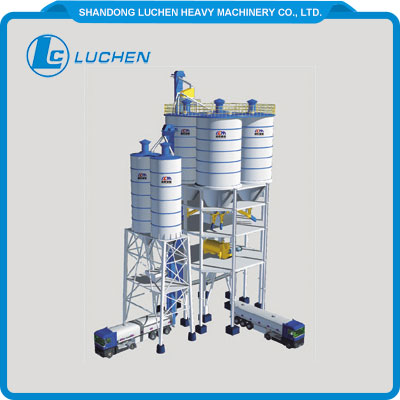An overview of the typical equipment used for dry mortar production
2023-11-15
The equipment for dry mortar production involves a set of machinery and tools designed to mix, convey, and package dry mortar products. Dry mortar is a mixture of cement, sand, and additives in a dry, powdered form, which is later mixed with water on-site to create a workable mortar for construction or other applications. Here's an overview of the typical equipment used for dry mortar production:
1. Raw Material Storage and Conveying:
- Silos: Large storage containers for storing bulk quantities of raw materials such as cement, sand, and additives.
- Screw Conveyors: Used for conveying materials from the silos to the mixing equipment.
2. Batching and Weighing System:
- Batching Plant: Precision batching of raw materials is crucial for the quality of the final product. Batching plants weigh and combine the materials in specific proportions according to the recipe.
- Weighing Systems: Load cells and scales to measure and control the quantity of each raw material accurately.
3. Mixing Equipment:
- Dry Mortar Mixer: Specialized mixers designed for efficiently blending dry mortar components. These can include paddle mixers, ribbon mixers, or ploughshare mixers.
- Twin-shaft Paddle Mixers: Commonly used for thorough and homogenous mixing of dry mortar ingredients.
4. Additive Dosing System:
- Additives such as plasticizers, accelerators, or retarders may be added to enhance the properties of the dry mortar. An additive dosing system ensures precise addition of these components.
5. Packaging and Bagging:
- Bagging Machine: Fills bags with the mixed dry mortar in predetermined quantities.
- Conveyor Systems: Transport the bags to the packaging area.
6. Quality Control and Monitoring:
- Automation Systems: Control systems that manage the entire production process, ensuring accurate weighing, mixing, and packaging.
- Quality Control Equipment: Sensors and instruments to monitor the consistency and quality of the produced dry mortar.
7. Storage and Dispatch:
- Finished Product Silos: Storage silos for the final dry mortar product.
- Dispatch Systems: Conveyor systems or other equipment for loading and unloading finished products.
8. Dust Collection System:
- Dust Collectors: Capture and filter airborne dust generated during the production process to maintain a clean working environment.
9. Utilities:
- Compressed Air System: Provides compressed air for various pneumatic components.
- Electrical Systems: Control panels and electrical infrastructure for powering and controlling the equipment.
10. Safety Equipment:
- Safety measures such as emergency stops, warning signs, and protective barriers to ensure the well-being of operators.
When setting up a dry mortar production line, the specific equipment and their configurations may vary depending on the scale of production, the types of dry mortar products being produced, and other factors. Manufacturers often customize the equipment to meet the specific needs of their production processes. Additionally, adherence to safety standards and regulations is crucial in the design and operation of the equipment.



